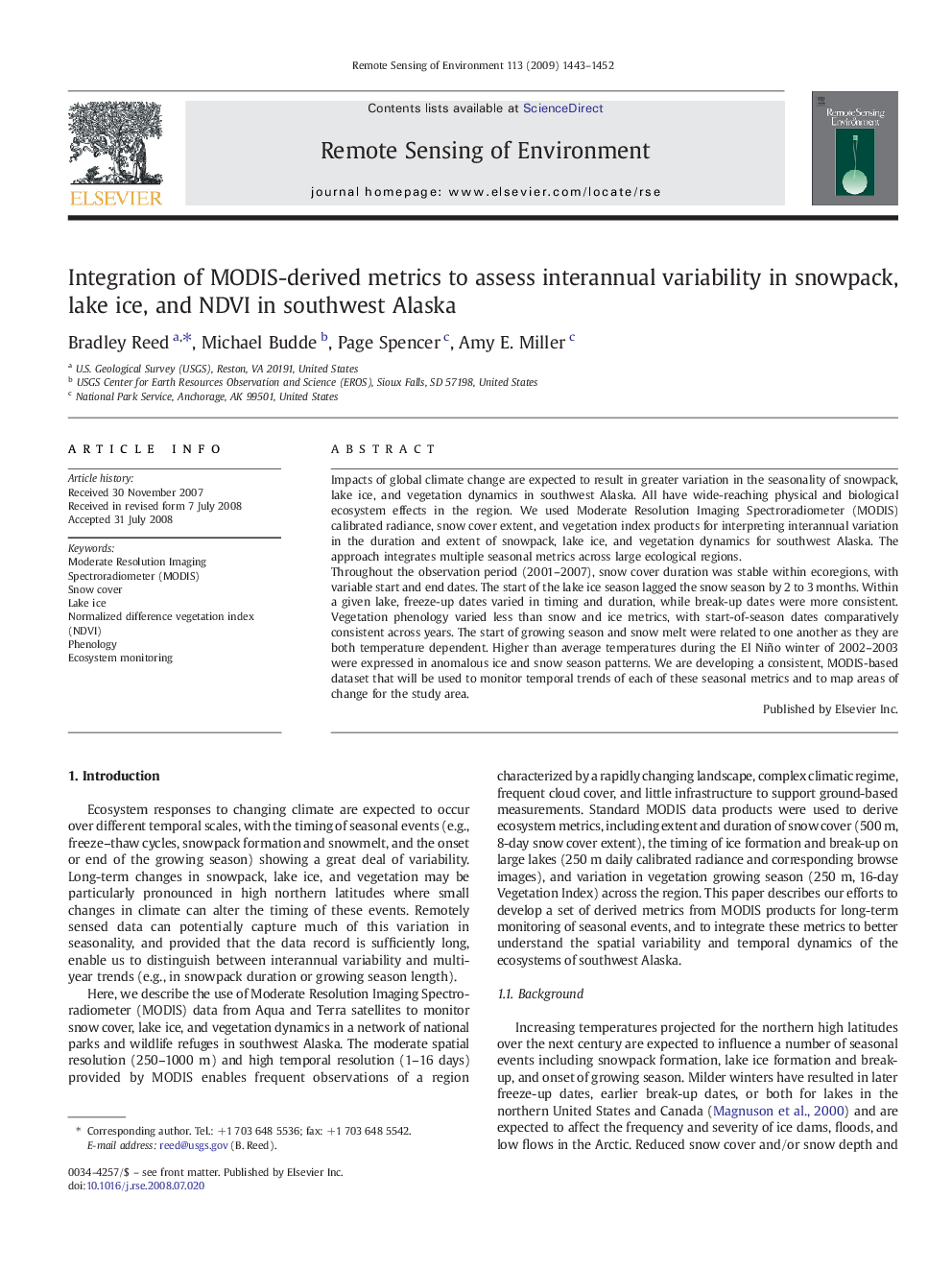| Article ID | Journal | Published Year | Pages | File Type |
|---|---|---|---|---|
| 4460123 | Remote Sensing of Environment | 2009 | 10 Pages |
Impacts of global climate change are expected to result in greater variation in the seasonality of snowpack, lake ice, and vegetation dynamics in southwest Alaska. All have wide-reaching physical and biological ecosystem effects in the region. We used Moderate Resolution Imaging Spectroradiometer (MODIS) calibrated radiance, snow cover extent, and vegetation index products for interpreting interannual variation in the duration and extent of snowpack, lake ice, and vegetation dynamics for southwest Alaska. The approach integrates multiple seasonal metrics across large ecological regions.Throughout the observation period (2001–2007), snow cover duration was stable within ecoregions, with variable start and end dates. The start of the lake ice season lagged the snow season by 2 to 3 months. Within a given lake, freeze-up dates varied in timing and duration, while break-up dates were more consistent. Vegetation phenology varied less than snow and ice metrics, with start-of-season dates comparatively consistent across years. The start of growing season and snow melt were related to one another as they are both temperature dependent. Higher than average temperatures during the El Niño winter of 2002–2003 were expressed in anomalous ice and snow season patterns. We are developing a consistent, MODIS-based dataset that will be used to monitor temporal trends of each of these seasonal metrics and to map areas of change for the study area.
